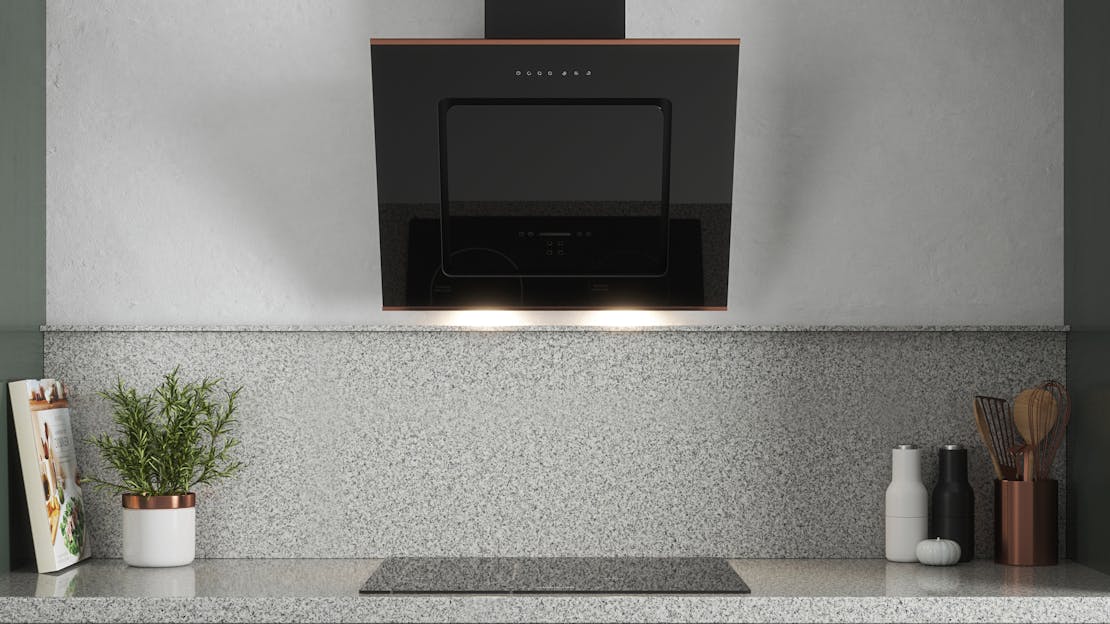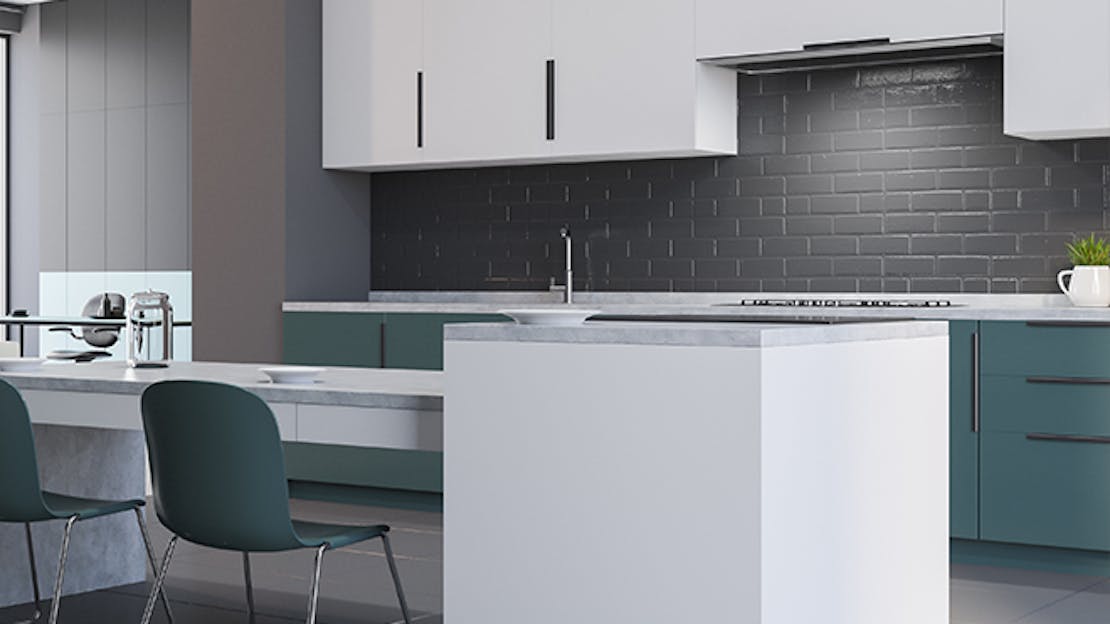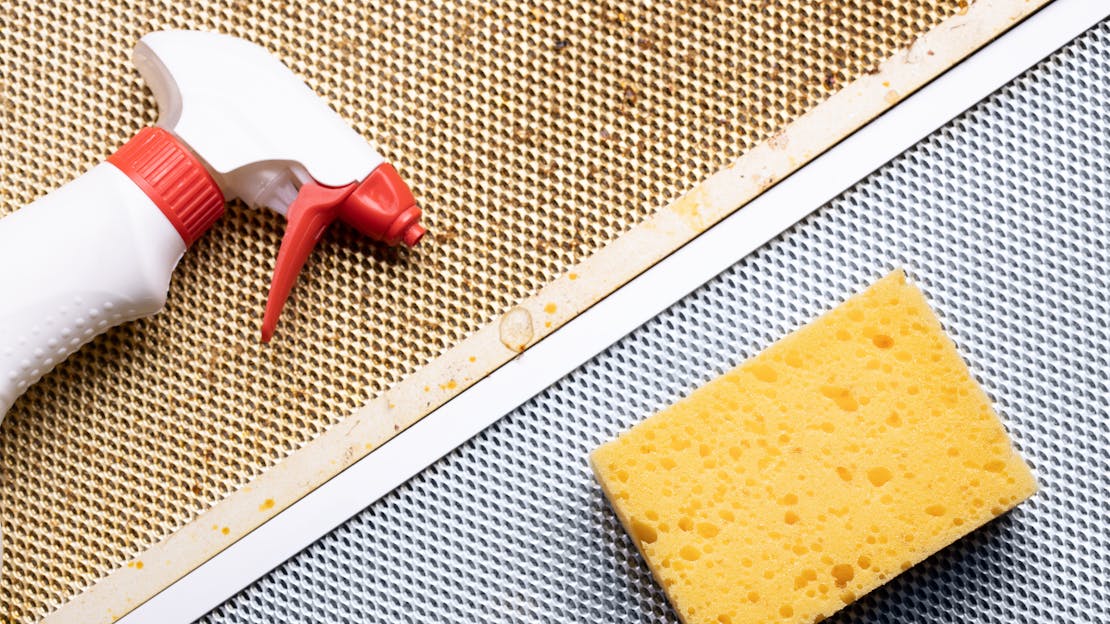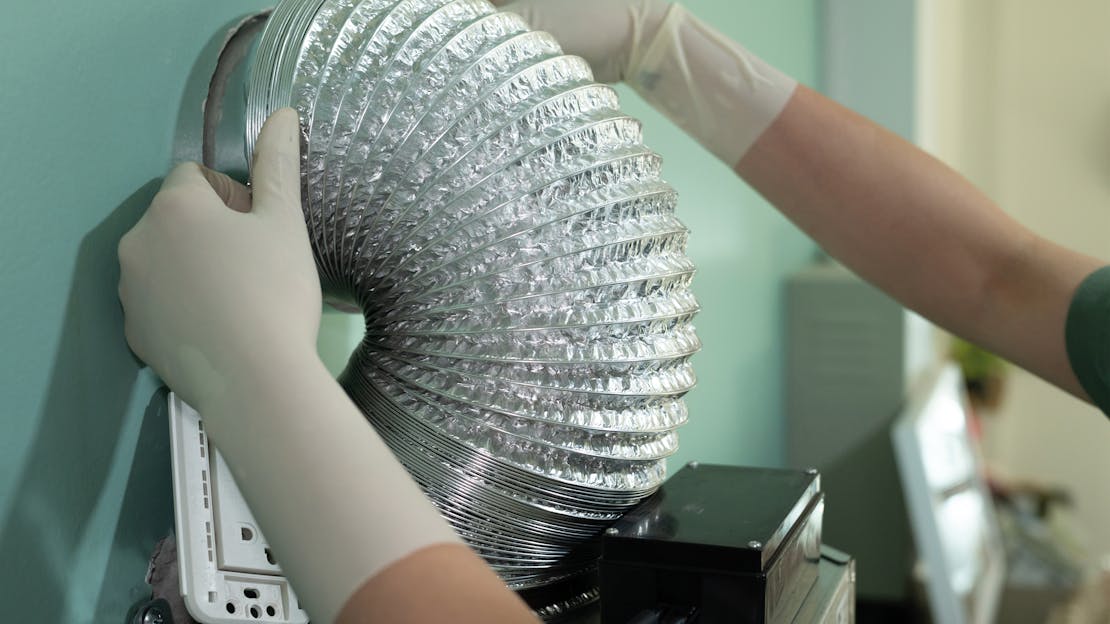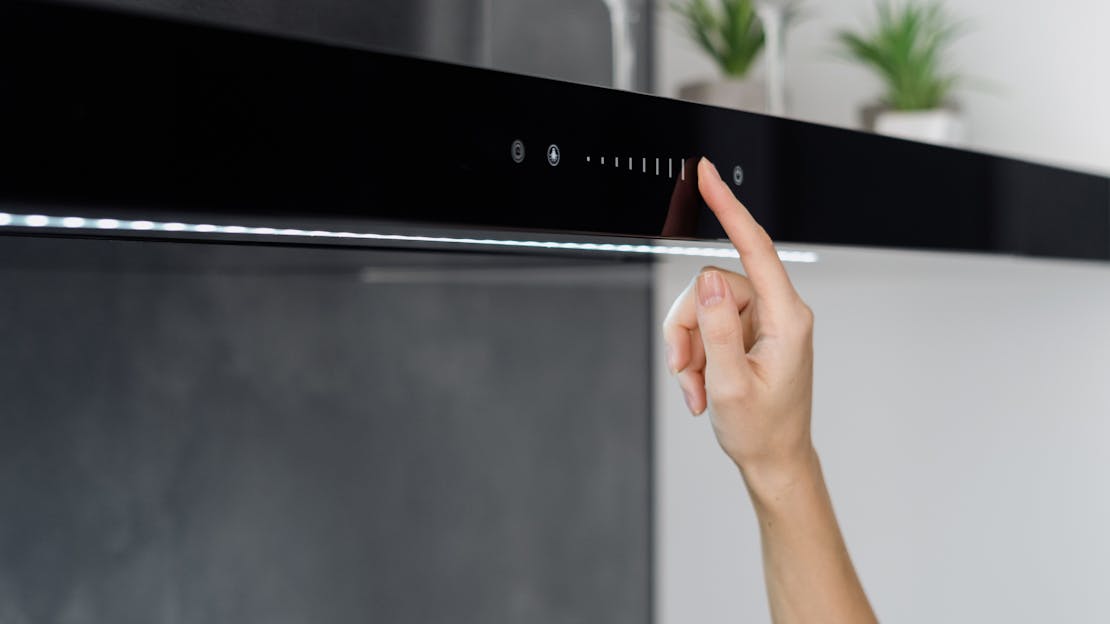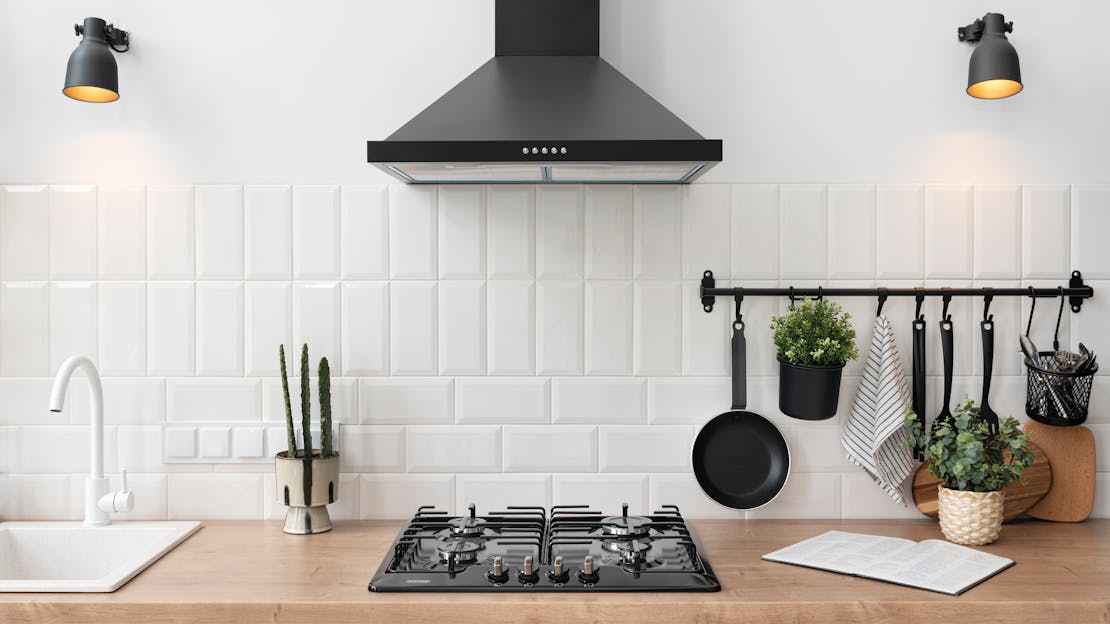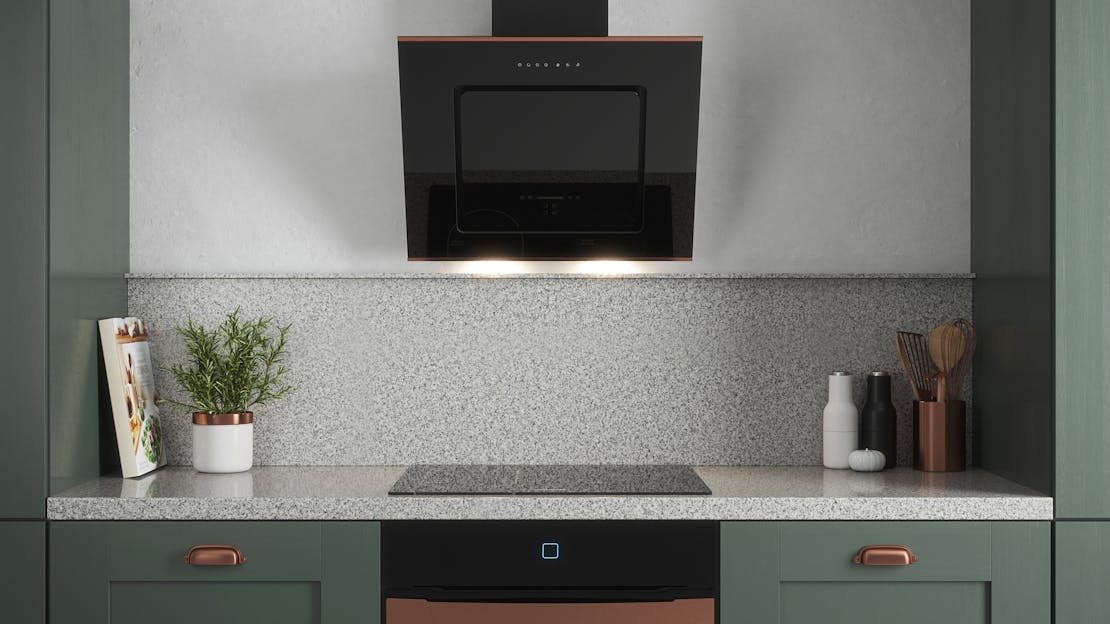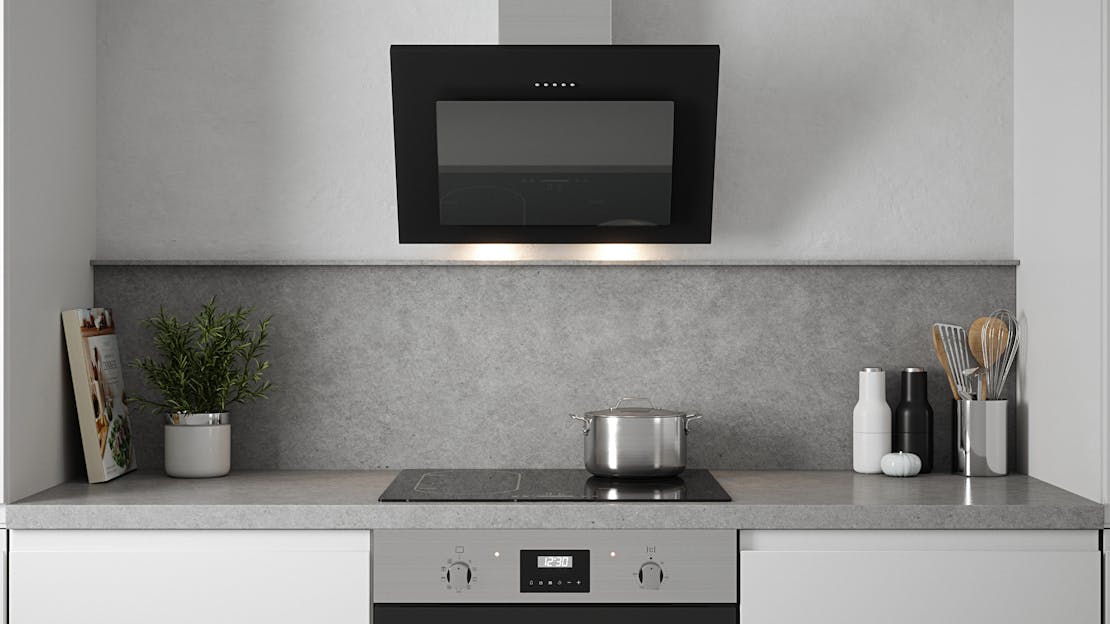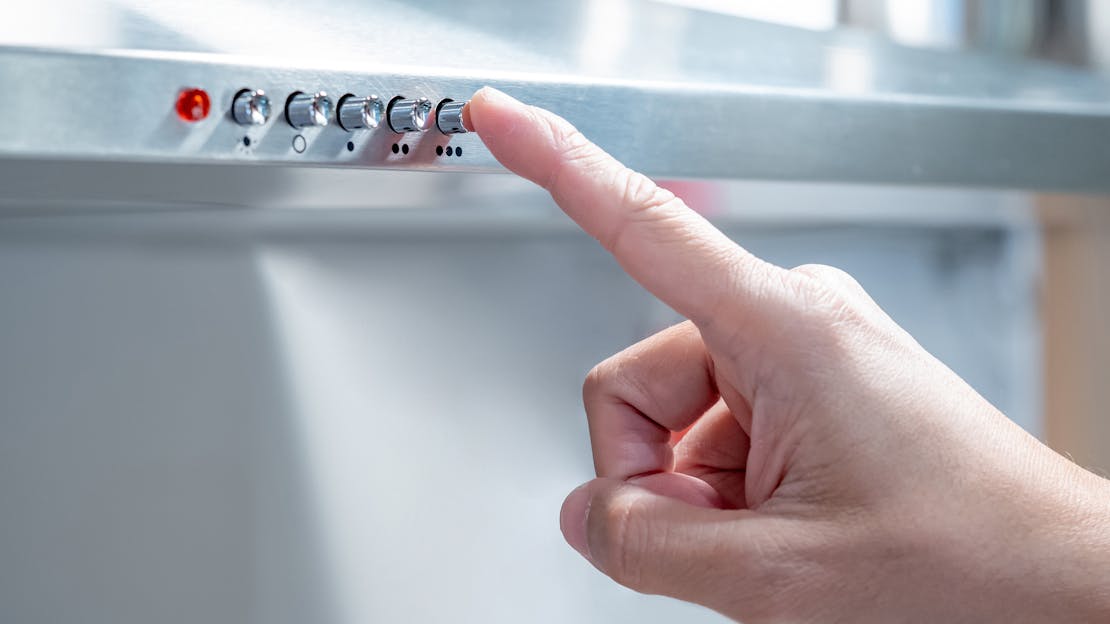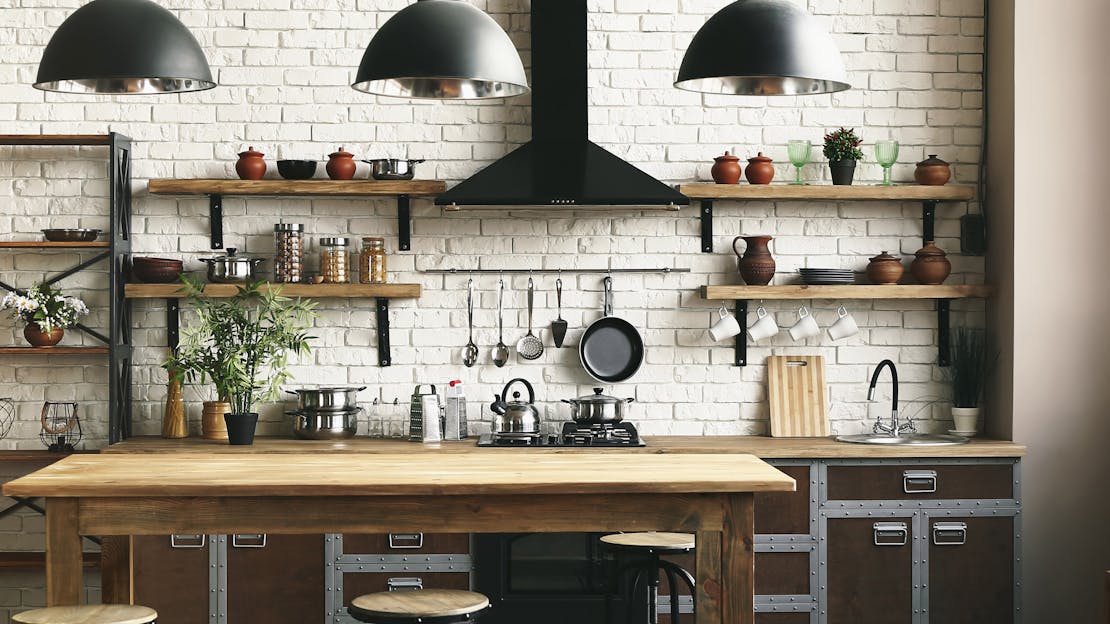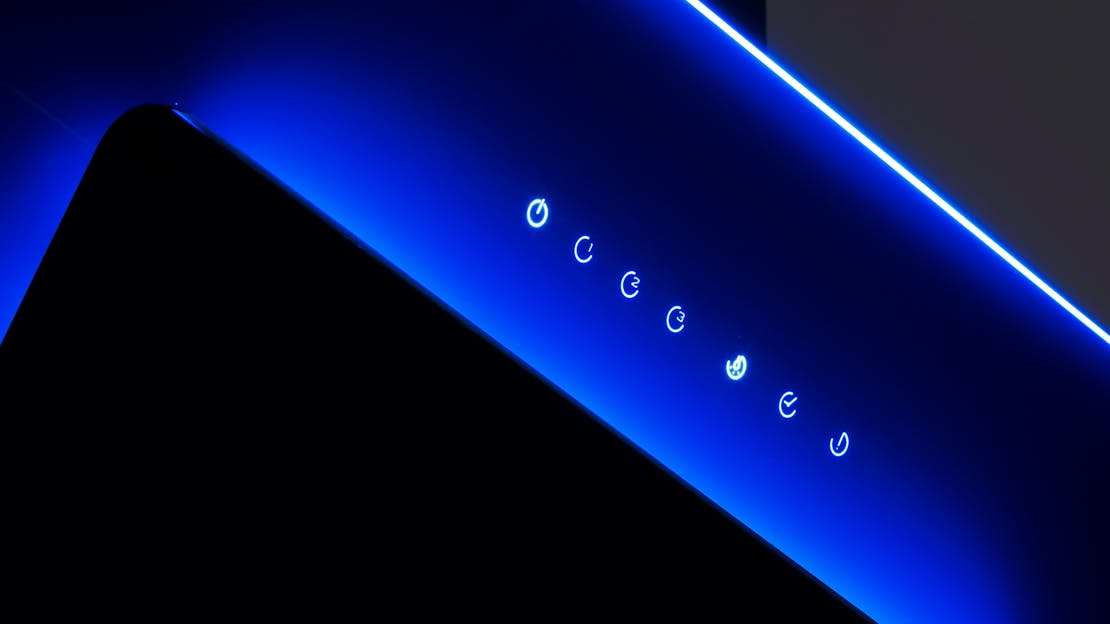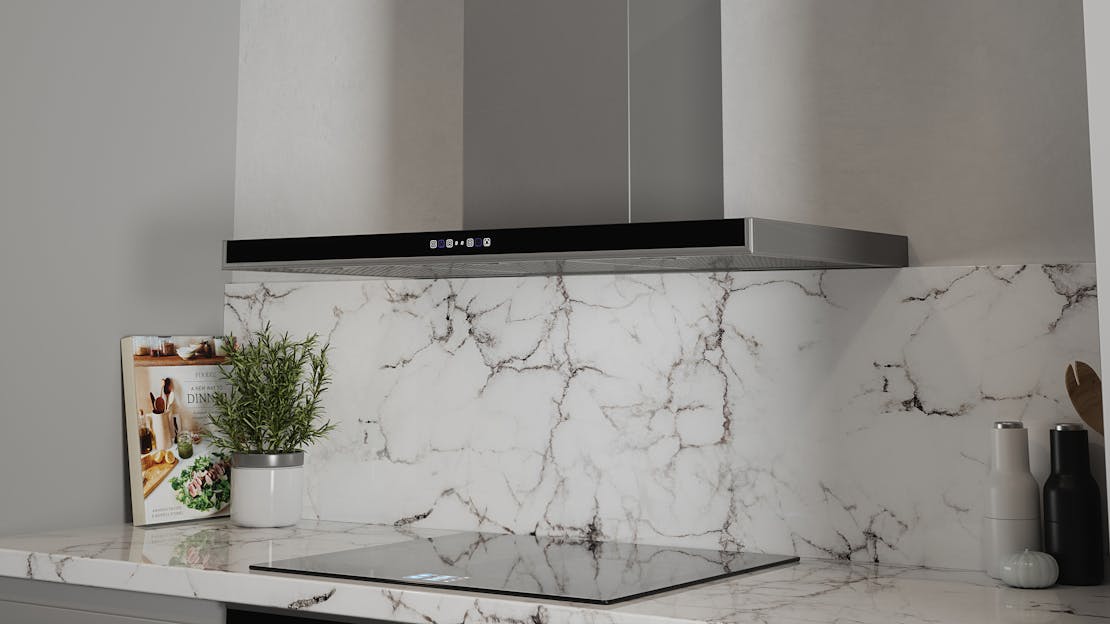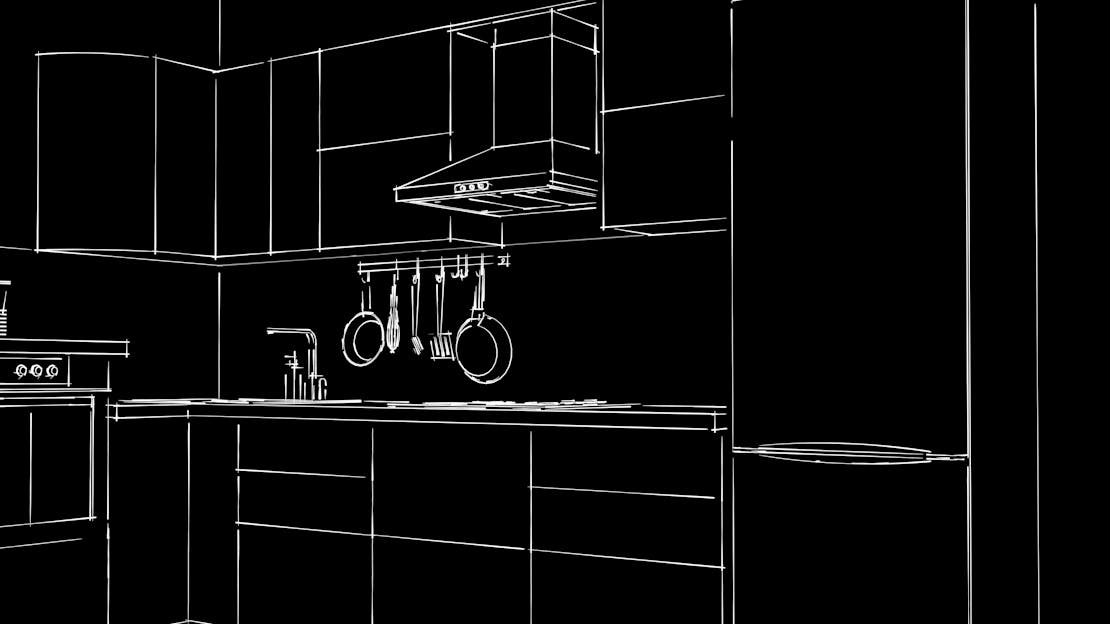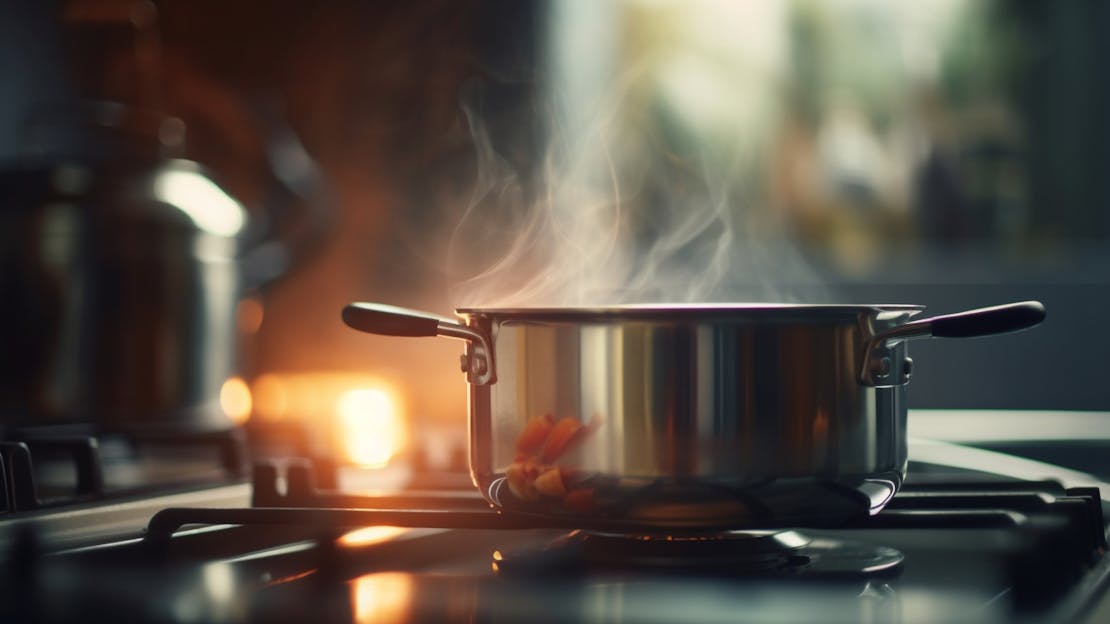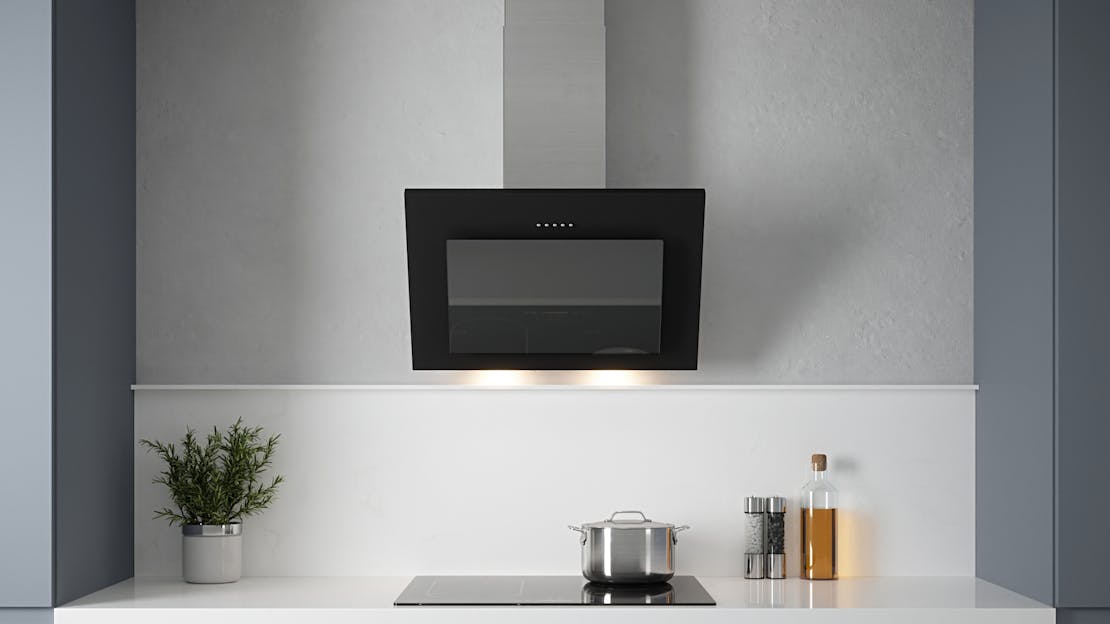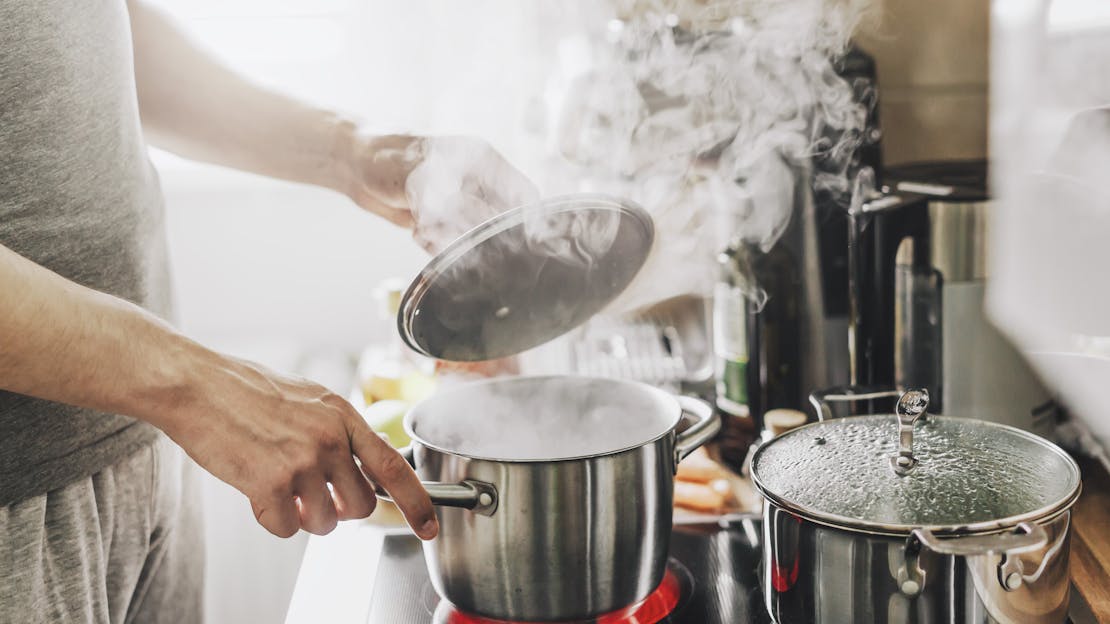
A Guide to Cooker Hood Filters: Everything You Need to Know
Everything you need to know about cooker hood filters
Maintaining a cooker hood requires minimal effort, primarily focusing on the regular cleaning or replacement of the cooker hood filter. This simple maintenance task ensures optimal performance and effectiveness of your cooker hood in removing smoke, odours, and grease particles from your kitchen. By prioritizing the cleanliness of your cooker hood filter, you can enjoy a clean and fresh cooking environment while prolonging the lifespan of your appliance.
What is a Cooker Hood Filter?
A cooker hood filter is a component of a cooker hood that helps to capture and remove grease, smoke, and odours from the air during cooking. It is designed to trap particles and prevent them from recirculating back into the kitchen or being released into the external environment. Cooker hood filters come in different types, such as grease filters and charcoal filters.
Grease Filters: These filters are typically made of metal or aluminium mesh and are positioned at the bottom or inside the cooker hood. Their primary function is to trap and collect grease particles generated during cooking. Grease filters need regular cleaning or replacement to maintain their effectiveness.
Charcoal Filters: Charcoal or carbon filters are additional filters often found in recirculating cooker hoods. They are designed to absorb and neutralise odours before recirculating the air back into the kitchen. Charcoal filters have a limited lifespan and need periodic replacement to ensure efficient odour removal.
Both types of filters play a vital role in maintaining a clean and odour-free kitchen environment. Regular cleaning or replacement of the cooker hood filter is necessary to ensure optimal performance and prevent the build-up of grease and odours. The specific maintenance requirements for your cooker hood filter will depend on the manufacturer's instructions and the type of filter used in your particular cooker hood model.
How to Clean Cooker Hood Filters
You'll typically only need to clean the grease filter as the carbon filters will typically need replacing.
Cleaning cooker hood filters is an essential maintenance task to ensure their proper functioning. Here's a step-by-step guide on how to clean cooker hood filters:
Check the manufacturer's instructions: Before starting the cleaning process, refer to the manufacturer's guidelines specific to your cooker hood model. They may provide specific instructions or recommendations for cleaning the filters.
Safety first: Ensure that the cooker hood is turned off and unplugged from the power source to avoid any accidents during the cleaning process.
Remove the filters: Most cooker hoods have easily removable filters. Depending on your cooker hood model, you may need to unscrew or unclip the filters to detach them from the hood. Consult the user manual if you're unsure how to remove them.
Pre-treat with degreaser (if necessary): If the filters are heavily greased, you can pre-treat them by spraying or soaking them in a degreasing solution. This helps to loosen and break down the grease for easier cleaning. Follow the instructions on the degreaser product for the appropriate duration of soaking.
Hand washing method: Fill a sink or basin with hot water and add a mild dishwashing detergent. Submerge the filters in the soapy water and let them soak for a few minutes. Use a soft brush or sponge to gently scrub the filters, paying extra attention to areas with heavy grease build-up. Rinse the filters thoroughly with clean water to remove all traces of soap.
Dishwasher method (if applicable): Some cooker hood filters are dishwasher-safe. Check the manufacturer's instructions to determine if your filters can be cleaned in the dishwasher. Place the filters in the dishwasher, following the recommended dishwasher settings. Ensure there are no other dishes or items that may interfere with the cleaning process.
Drying and reinstallation: After cleaning, allow the filters to air dry completely before reinstalling them. Make sure they are completely dry to prevent the growth of mould or mildew. Once dry, carefully place the filters back into their original position in the cooker hood, ensuring they are securely fastened.
Regular maintenance: To maintain the cleanliness of your cooker hood filters, it is recommended to clean them every 1-3 months, depending on your cooking frequency and the level of grease accumulation.
By following these steps, you can effectively clean your cooker hood filters and ensure the proper functioning of your cooker hood in removing grease, smoke, and odours from your kitchen.
Can Cooker Hood Grease Filters Go in the Dishwasher?
Whether or not cooker hood grease filters can be placed in the dishwasher depends on the specific type and material of the filter, as well as the manufacturer's instructions. Some grease filters are dishwasher-safe, while others are not. Here are some guidelines to determine if your cooker hood grease filters can be washed in the dishwasher:
Consult the manufacturer's instructions: Check the user manual or any accompanying documentation provided by the manufacturer. They should specify whether the grease filters are dishwasher-safe or provide instructions on the recommended cleaning method.
Material of the filters: Determine the material of your grease filters. Metal or aluminium mesh filters are more likely to be dishwasher-safe, as they can withstand the dishwasher's cleaning process. However, other types of filters, such as charcoal or foam filters, are usually not dishwasher-safe and require hand washing.
Check for dishwasher-safe markings: Some grease filters may have dishwasher-safe markings or symbols on them, indicating that they can be safely cleaned in the dishwasher. Look for these markings on the filters.
Consider the condition of the filters: If the filters are heavily caked with grease or have been used for an extended period, they may benefit from hand washing to ensure a thorough cleaning.
If your cooker hood grease filters are deemed dishwasher-safe based on the above considerations, follow these additional guidelines:
Remove any excess grease or debris from the filters before placing them in the dishwasher.
Place the filters in the dishwasher in a secure position, ensuring they are not obstructing other dishes or interfering with the dishwasher's spray arms.
Use a dishwasher cycle suitable for the filters, following the dishwasher manufacturer's instructions and settings.
After the dishwasher cycle is complete, inspect the filters to ensure they are clean and free from any remaining grease or residue.
Allow the filters to air dry completely before reinstalling them in the cooker hood.
If your cooker hood grease filters are not dishwasher-safe, it is important to follow the recommended hand washing method provided by the manufacturer. Regularly cleaning the grease filters, whether in the dishwasher or by hand, is crucial to maintain their effectiveness in capturing grease particles and ensuring the efficient operation of your cooker hood.
How to replace a cooker hood filter
Replacing a cooker hood filter is a straightforward process. Here's a step-by-step guide on how to replace a cooker hood filter:
Check the manufacturer's instructions: Refer to the user manual or any provided documentation for specific guidance on replacing the filter. Different cooker hood models may have variations in the replacement process.
Safety first: Ensure that the cooker hood is turned off and unplugged from the power source to avoid any accidents during the replacement process.
Identify the filter location: Locate the filter compartment or access panel on the cooker hood. This is typically located underneath the hood or within the chimney structure, depending on the design of your cooker hood.
Remove the old filter: Depending on the type of filter, it may be secured with clips, screws, or other fastening mechanisms. Carefully remove these attachments to detach the old filter from the cooker hood. Take note of the filter's orientation or any alignment marks, as this will be important when installing the new filter.
Prepare the new filter: If you haven't already done so, acquire a replacement filter that is compatible with your cooker hood model. Ensure that the new filter matches the size, type, and specifications recommended by the manufacturer. If applicable, remove any protective packaging or films from the new filter before installation.
Install the new filter: Align the new filter according to the marked orientation or the instructions provided. Insert it into the filter compartment or designated area, making sure it fits securely and snugly. Follow any specific installation instructions provided by the manufacturer, such as fastening screws or engaging clips to hold the filter in place.
Verify proper installation: Double-check that the filter is correctly installed and securely positioned. Ensure there are no gaps or loose connections that could compromise its effectiveness or interfere with the cooker hood's operation.
Reset filter replacement indicator (if applicable): Some cooker hoods have filter replacement indicators or timers to remind you when it's time to replace the filter. If your cooker hood has this feature, follow the manufacturer's instructions to reset or deactivate the indicator after installing the new filter.
By following these steps, you can easily replace the filter in your cooker hood. Regularly replacing the filter as recommended by the manufacturer is essential to maintain optimal performance
How Often Should You Replace a Cooker Hood Filter
The frequency of replacing a cooker hood filter depends on various factors, such as the type of filter, cooking habits, and the manufacturer's recommendations. However, as a general guideline:
Grease Filters: Grease filters, typically made of metal or aluminium mesh, should be cleaned or replaced more frequently. For regular home cooking, it is recommended to clean grease filters every 1-3 months, or as soon as they become visibly clogged with grease or debris. Some dishwasher-safe grease filters can be cleaned in the dishwasher, while others may require hand washing.
Charcoal Filters: Charcoal or carbon filters, often used in recirculating cooker hoods, are designed to absorb and neutralise odours. These filters have a limited lifespan and need to be replaced periodically. The manufacturer usually specifies the recommended replacement interval, which typically ranges from 3-12 months, depending on usage and the specific cooker hood model. If you notice persistent odours or a decrease in the filter's effectiveness, it may be time to replace the charcoal filter even if it hasn't reached the recommended timeframe.
It's important to note that these are general guidelines, and the replacement frequency can vary depending on factors such as cooking frequency, types of food cooked, and the level of grease or odour accumulation. It's always best to consult the manufacturer's instructions specific to your cooker hood model for the most accurate guidance on filter replacement.
Regular maintenance and timely filter replacement are crucial to ensure optimal performance and efficient removal of grease, smoke, and odours from your kitchen. By adhering to the manufacturer's recommendations and keeping a regular cleaning and replacement schedule, you can maintain a clean and effective ventilation system in your kitchen.
Top Selling Cooker Hoods from MyAppliances
Explore our best-selling cooker hoods, featuring angled glass, curved glass, and chimney styles. These sleek options offer powerful ventilation and contemporary design, ideal for modern kitchens. Upgrade your cooking area with our top-selling hoods, merging functionality with stylish appeal.
Everything you need to know about Cooker Hoods
Everything you need to know about Cooker Hoods
Cooker hoods are essential kitchen appliances that combine functionality with style. These sleek units efficiently remove cooking odors and grease from the air, ensuring a fresh and clean kitchen environment. Explore our collection of articles to discover how cooker hoods can enhance your cooking space with their effective ventilation and modern designs.
![The Ultimate Guide to Cooker Hoods]()
From understanding the different types and features to exploring installation options and maintenance tips, this comprehensive guide will equip you with the knowledge to transform your kitchen into a truly captivating and odour-free haven.
![The Ultimate Guide to Integrated Cooker Hoods]()
Within this comprehensive guide, we will delve into the various types, features, installation options, and maintenance tips for integrated cooker hoods, enabling you to make an informed choice and enhance your kitchen into a fresher, more enjoyable environment.
![Cooker Hoods Explained – The Ultimate Guide To Ventilating Your Kitchen]()
In this comprehensive guide, we will delve into the importance of proper kitchen ventilation and provide you with all the essential information you need to create a clean, comfortable, and healthy cooking environment.
![The Ultimate Guide to Keeping Your Cooker Hood Clean]()
In this article, we’ll explore the best ways to keep your cooker hood clean, including what cleaner to use, what cloth to use, how to keep on top of dust, how to clean the filters, and how to stop fingerprints on stainless steel hoods.
![What is the difference between vented and recirculating cooker hoods?]()
Vented and recirculating cooker hoods serve the same fundamental purpose in a kitchen: they help to remove smoke, odours, grease, and airborne particles generated during cooking. However, they achieve this goal through different methods, and each has its own advantages and disadvantages. In this article we explore the key differences between vented and recirculating cooker hoods.
![Your Guide on How to Reduce Cooker Hood Noise Levels]()
Whether you're an enthusiastic cook or someone seeking a quieter kitchen, this guide provides valuable insights into reducing cooker hood noise. We'll delve into the underlying factors causing the disturbance and provide practical solutions, including routine maintenance and advanced soundproofing techniques, allowing you to transform your kitchen into a tranquil culinary haven. Say goodbye to the clamour and embrace a quieter, more enjoyable cooking experience.
![What do cooker hoods do?]()
Cooker hoods are essential appliances in kitchens designed to improve air quality and remove various airborne contaminants, odours, and pollutants generated during cooking. They play a crucial role in maintaining a clean, healthy, and comfortable kitchen environment. In this guide we will cover exactly what cooker hoods do.
![What are the Regulations on Cooker Hoods?]()
There are some general guidelines that you should follow when installing or using a cooker hood. These guidelines are designed to ensure that your cooker hood is safe and effective.
![What size cooker hood do I need?]()
Determining the right size cooker hood is crucial to ensure efficient smoke and odour extraction, creating a clean and comfortable cooking environment. In this guide, we will walk you through the considerations and steps involved in selecting the ideal size cooker hood that suits your specific requirements. Let's dive in and find the perfect match for your kitchen!
![A Guide to Choosing the Right Cooker Hood for Your Kitchen]()
With so many different types of cooker hood styles available, it can be difficult to know which one is right for your kitchen. In this article, we’ll explore the different types of cooker hood styles available, including downdraft cooker hoods, island hoods, visor hoods, and integrated hoods. We’ll also explain why it’s worth paying extra for a designer hood, and what the different shapes of cooker hood mean.
![A Guide to Cooker Hood Filters : Everything You Need to Know]()
Maintaining a cooker hood requires minimal effort, primarily focusing on the regular cleaning or replacement of the cooker hood filter. This simple maintenance task ensures optimal performance and effectiveness of your cooker hood in removing smoke, odours, and grease particles from your kitchen.
![A Comprehensive Guide on Choosing the Perfect Cooker Hood for Your Kitchen]()
Join us on this journey as we explore the world of cooker hoods, unravel the mysteries of extraction power and filtration systems, and uncover the secrets to finding a cooker hood that seamlessly integrates into your kitchen's design while efficiently clearing the air of unwanted impurities.
![Cooker Hoods: A Guide to Our Advanced Features]()
In this article, we’ll explore some of our key features, including quiet hoods, energy-efficient hoods, types of controls, boost function, timer, and peripheral aspiration.
![How do I know which Cooker Hood I need?]()
Cooker hoods might seem like one of those kitchen components that's just there. You notice it when it's too loud or if it doesn't do its job properly. But, in fact, the right cooker hood can be a silent hero in your culinary space. Let's get straight into figuring out the right one for you.
![How Far Away Above the Cooker Should the Cooker Hood Be?]()
Selecting the right cooker hood is just one piece of the puzzle; positioning it correctly is equally vital. The height at which the hood is placed above your cooker can influence its effectiveness, safety, and the overall aesthetics of your kitchen. Let's delve into the optimal heights and the factors affecting this crucial decision.
![Understanding Extraction Rate: A Simple Guide to Choosing the Right Cooker Hood]()
When choosing a cooker hood, one of the most important factors to consider is the extraction rate. However, this term can be confusing for many consumers. In this article, we’ll explain what the extraction rate is and how it’s calculated, so you can choose the right cooker hood for your kitchen with confidence.
![FAQ - Cooker Hoods]()
Ventilation matters more than you might think in your kitchen, and that's where cooker hoods come in. Our Cooker Hoods FAQ will help you understand the importance of these essential appliances. From removing cooking odours and improving air quality to selecting the right type of hood for your kitchen layout, we'll address your questions and concerns about cooker hoods to ensure your cooking space remains fresh and comfortable.
![Clearing the Air: Strategies to Combat Condensation with Cooker Hoods]()
This article delves into the causes of condensation during cooking and provides a comprehensive guide to mitigating its effects.

